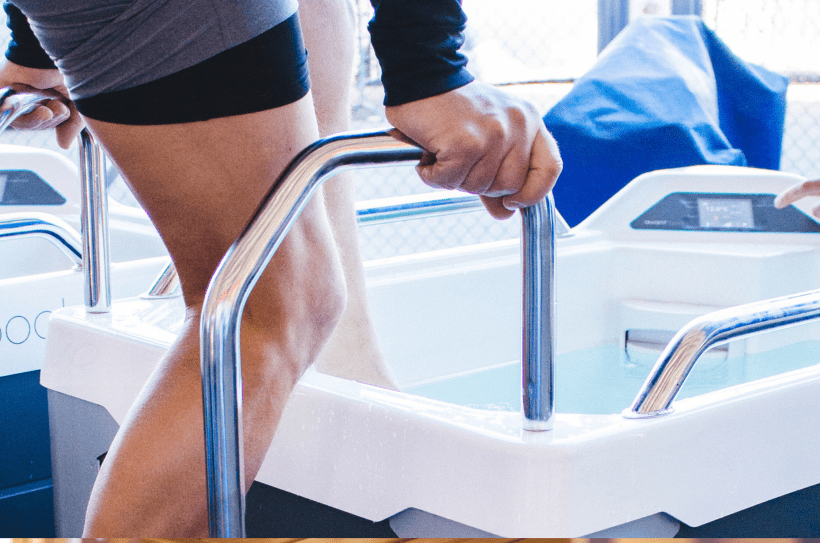Benefits of Cold Bathing After Exercise: A Complete Guide to Smart Recovery
There are many trends in the world of sports recovery, but some practices remain because they offer real and consistent results. The cold bath, or immersion in cold water after exercise, is one of them.
For a long time, this technique was used almost exclusively by high-performance athletes. Today, it has become accessible to anyone interested in taking better care of their body between workouts. From portable tubs to professional spa systems, cold baths are gaining ground in more balanced recovery routines.
But is the discomfort worth it? What does science really say?
In this article, we explore the proven benefits of cold baths after exercise, how they work, when to use them and what you need to bear in mind to integrate this practice effectively.
What Is a Cold Bath?
The term cold plunge refers to the total or partial immersion of the body in cold water, usually between 8°C and 15°C, for a short period of time - between 2 and 10 minutes, depending on tolerance.
It is a form of thermotherapy based on controlled exposure to cold, with the aim of activating natural physiological responses that help regulate internal temperature, control inflammation and muscle recovery.
Nowadays, it can be done in various ways:
-
In tubs suitable for cold immersion
-
In natural environments (rivers, lakes, sea)
-
In traditional ice baths
-
In spas and wellness centers
Regardless of the structure, the logic is always the same: use the cold as an ally in regenerating the body.
1. Relieves Muscle Pain and Accelerates Recovery
The best known - and most studied - benefit of cold baths is the reduction of so-called delayed-onset muscle soreness (DOMS), which usually appears 24 to 72 hours after an intense workout.
Because it works:
During exercise, especially resistance or strength exercise, small injuries occur in the muscle fibers. This causes inflammation, a natural part of the recovery process, but which can lead to stiffness, pain and loss of mobility.
Immersion in cold water helps:
-
constrict blood vessels (vasoconstriction), reducing blood flow and, with it, local swelling
-
Reduce the excessive inflammatory response, speeding up pain relief
-
Temporarily deactivate pain receptors, creating a feeling of immediate relief
What science says:
A systematic review published in 2016 in the Cochrane Database of Systematic Reviews analyzed 17 clinical trials and concluded that cold water immersion significantly reduces muscle soreness in the 24 to 96 hours after exercise, compared to passive recovery.
It doesn't eliminate the discomfort completely, but it does shorten the recovery time and allows you to maintain consistency in your training.

2. Regulates Inflammation and Supports Muscle Repair
Inflammation is an essential response to muscle injury, but its excess or prolonged duration can hinder the healing process and increase the risk of secondary injuries.
How cold showers help:
-
Initial vasoconstriction limits localized inflammation, preventing swelling from worsening
-
After getting out of the bath, reactive vasodilation occurs, where the blood returns with more oxygen and nutrients
-
This sequence stimulates the removal of metabolic waste (such as lactic acid) and accelerates the natural repair mechanisms
In other words, the cold shower doesn't block the recovery process, but helps regulate it more efficiently - especially useful when you train several times a week.
3. Fights Fatigue and Stabilizes the Nervous System
Post-workout fatigue goes beyond the muscles. The central nervous system (CNS) also wears out, especially in high-intensity, long-duration workouts or when there is little recovery time between sessions.
The cold acts on several levels:
-
Quickly cools the internal body temperature, helping the body to return to thermal equilibrium
-
Stimulates the parasympathetic nervous system, responsible for rest and recovery functions
-
Reduces hyperactivity of the sympathetic system, the body's "alert mode" that activates during exertion
The result? Many athletes describe the cold shower as a real reset, both physically and mentally. In just a few minutes, the body switches from "exertion mode" to "recovery mode", which improves the feeling of energy the next day.
4. Strengthens Mental Resilience and Increases Focus
The impact of the cold is not limited to the body. Immersion in cold water also challenges emotional and mental control. The practice requires presence, controlled breathing and managing discomfort - skills that, over time, transfer to other areas of life and training.
Psychological and neurological benefits:
-
Increased mental clarity and alertness through the release of norepinephrine
-
Reduced anxiety and feelings of mental overload
-
Greater tolerance to stress, both physical and emotional
-
Stimulation of the vagus nerve, associated with regulating mood, heartbeat and the digestive system
For this reason, the cold shower can be seen not only as a recovery tool, but also as part of a practice of resilience and self-control.
5. Can Help Prevent Overload and Overtraining
Overtraining without adequate recovery time can lead to a condition known as overtraining - characterized by chronic fatigue, low performance, hormonal changes and increased risk of injury.
The regular use of cold baths can help:
-
Reduce systemic inflammation that accumulates with continuous effort
-
Decrease the perception of effort in subsequent workouts
-
Improving the quality of sleep - especially if the cold bath is taken at the end of the day, promoting natural cooling of the body and making it easier to fall asleep
As part of a balanced approach to recovery - along with active rest, stretching and, for example, a sauna - cold baths can extend the longevity of sports practice.

How to Use the Cold Bath Effectively: Best Practices
1. ideal timing
-
For muscle recovery, the ideal is to take a cold shower within 30 to 60 minutes after training.
-
If the focus is on gaining muscle mass, it may be better to wait a few hours, as some research suggests that immediate cold may slightly reduce signs of hypertrophy.
2. Temperature and duration
-
Between 10°C and 15°C is the most effective and safest range.
-
Start with 2 to 3 minutes and gradually increase to 8 to 10 minutes, depending on your tolerance.
-
Longer sessions are not necessarily better - the aim is to activate recovery mechanisms, not to push the body to extremes.
3. Frequency
-
2 to 4 times a week is enough for most people.
-
Competitive athletes can benefit from daily sessions, especially during periods of intense load.
Conclusion: A Simple Tool for Smarter Recovery
The cold shower is not a fad. It's a solid, studied practice, with decades of application in high-performance contexts - now adapted to the real life of those who train regularly and want to recover better, not just faster.
If used sensibly, it can help:
-
Reduce pain and inflammation
-
Regulate the nervous system and restore energy
-
Improve mental focus and emotional well-being
-
Avoid accumulated fatigue and maintain training consistency
Whatever your level of practice, the cold bath is a simple and effective way of giving the body what it needs to continue evolving in a sustainable way.
Do you want to incorporate a cold shower into your wellness routine?
Take a look at our selection of bathtubs and cold immersion systems - built to last, designed for results.
👉 See Cold Immersion Baths →
All lifestyle images used in this article are courtesy of AvantoPool, our number one ice bath partner.


